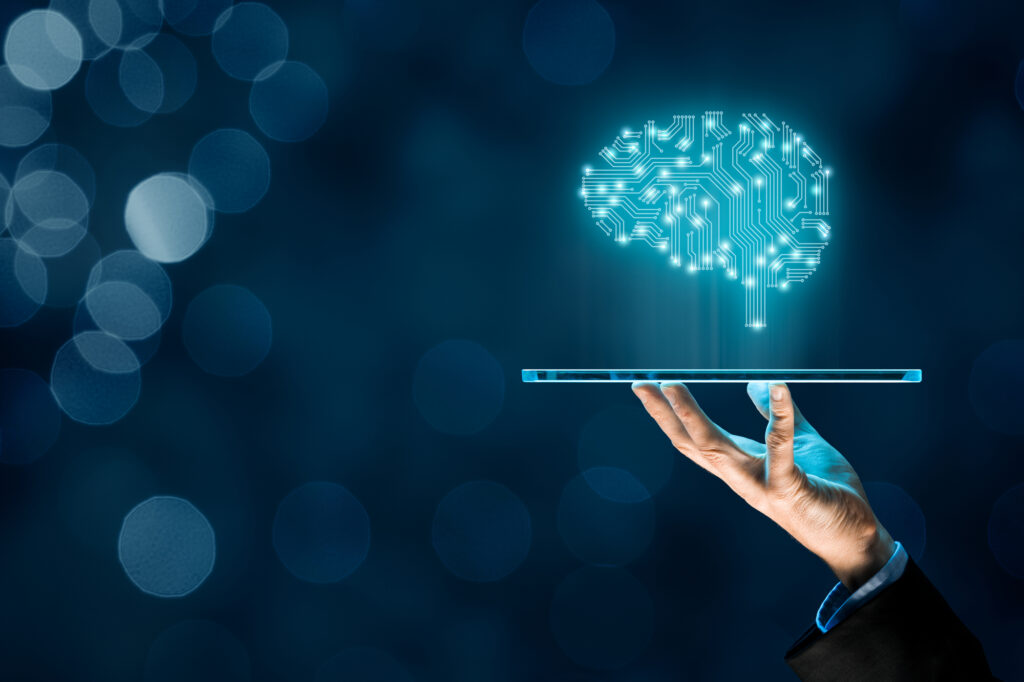Artificial intelligence can have a large impact on global economic activity. To maximize the benefits, it will be necessary to manage the widening gap between countries, companies, and workers.
Artificial intelligence (AI) tools, techniques, and their role in the business world and global economy are hot topics. This is not surprising given that AI might usher in radical–arguably unprecedented–changes in the way people live and work. Most of the economic impact of AI is still to come.
McKinsey’s Global Institute has released a new study that attempts to simulate AI’s impact on the global economy. It begins by analyzing the dynamics and behavior of different sectors and companies to create a bottom-up approach to the adoption and absorption of AI technologies. It also takes into consideration the disruptions that companies, workers, and countries are likely to face as they make the transition to AI. Costs will most likely be incurred during the transition period and should be included in any estimation. The analysis looks at how the economic gains and losses will be distributed between firms, employees, and countries, and how that distribution may hinder AI’s benefits. Third, the research examines the dynamics of AI for a wide range of countries–clustered into groups with similar characteristics–to give a more global view.
The analysis is meant to be a guide for the economic impact that AI could have based on what we know at this point. The following are some of the main findings:
- AI has a large potential to contribute to the global economy
- The adoption of AI may widen the gap between countries, companies, and workers
We strive to provide individuals with disabilities equal access to our website. If you want information about this content we will happily work with you.

AI has a large potential to contribute to the global economy
The McKinsey Global Institute examined five broad categories of AI. These were computer vision, natural languages, virtual assistants, and robotic process automation. These tools will be used by companies in varying degrees. Some companies will adopt an opportunistic strategy, piloting only one technology in a particular function. (This is what our model calls adoption). Some companies will adopt all five technologies and absorb them throughout the organization. This is what we call “full absorption”. Between these two poles will be many different companies, each at a different stage of adoption. The model captures the partial impact.
The average simulation suggests that by 2030, 70 percent of firms will likely have adopted AI technologies in some form. However, less than half of those companies will have fully absorbed all five categories. The adoption pattern and the total absorption may be at the higher end of what’s been observed for other technologies.
Jacques Bughin explains the challenges that organizations must overcome to make automation a commonplace technology.
Several barriers could slow down adoption and absorption. (See the video “A Minute with McKinsey Global Institute – Challenges in adopting automation technology”. Late adopters may find it hard to make AI work because the front runners have already seized AI opportunities, and late adopters are lagging in developing their capabilities and attracting talent.
At the global average adoption and absorption level implied by our simulation, AI can deliver an additional global economic activity worth around $13 trillion in 2030. This is about 16 percent more GDP cumulative than today. This is equivalent to an additional 1.2 percent GDP growth each year. This impact, if delivered, would be comparable to other general-purpose technology throughout history.
AI-driven growth in productivity is affected by several factors including labor automation and innovation. The size of the impact is affected by micro factors such as AI adoption pace and macro factors such as the global connectedness of a nation or the labor market structure.
Our simulation looked at seven different channels of impact. The first three are related to the impact that AI adoption has on the mix and need of production factors, which directly impact company productivity. The other four externalities are linked to AI adoption and relate to the broader economic environment. These seven channels aren’t definitive or comprehensive, but they do represent a good starting point. They reflect our current understanding of the trends and issues (Exhibit 1)
Our website is accessible to all users. We will be pleased to provide you with any information you require about the content.
AI’s impact may not be linear, but it could increase at an increasing rate over time. By 2030, its contribution to growth could be three times or more than what it was in the last five years. The adoption of AI will likely follow an S-curve. A slow start is expected due to the high costs and investments associated with learning these technologies and deploying them, followed by an acceleration fueled by the competition and improvements in complementary capabilities along with process innovations.
This “slow burn pattern” of impact is not proof of the limited effect of AI. Early adopters will reap the benefits in future years, while firms that do not or only partially adopt these technologies may suffer.

The adoption of AI may widen the gap between countries, companies, and workers.
Al may boost economic activity but the effects are likely to vary.
What impact AI may have on countries
AI could potentially widen the digital divide between countries. As AI adoption rates vary, countries may need to adopt different strategies.
Leaders in AI adoption (mostly developed countries) may increase their lead in developing countries. Leading AI countries may capture 20 to 25% more in net economic benefits than they do today. Developing countries, on the other hand, might only capture 5 to 15%. As their GDP growth momentum slows, many developed countries may have no option but to use AI to achieve higher productivity growth. This is partly due to the challenges posed by aging populations. In these high-wage economies, more incentives exist to replace labor with machines.
Would you like more information about the McKinsey global institute?
To improve productivity, developing countries have other options, such as catching up with best practices or restructuring their industries. They may therefore be less motivated to push AI (which in any event might offer them a smaller economic benefit than advanced economies). This rule may not apply to all developing countries. China, for example, has an AI national strategy and is investing heavily to become the global leader.
AI and the future of business
AI technologies may lead to a performance difference between the frontrunners (companies who fully integrate AI tools into their enterprise over the next 5 to 7 years) and nonadopters.
On one end, the frontrunners will likely benefit disproportionately. They could double their cash flow by 2030 (economic benefits captured less associated investment and transfer costs). This would mean an additional net cash flow growth of approximately 6 percent per year for the next decade. The front-runners are those who have a solid IT foundation, an increased willingness to invest in AI, and a positive view of the AI business case.
Non-adopters could see their cash flow drop by around 20 percent if they continue to use the same revenue and cost model. This profit pressure can be attributed to the strong competitive dynamics between companies, which could lead to a shift in market share from the laggards to the leaders.
Our website is accessible to all users. We will be pleased to provide you with any information you require about the content.

How AI can affect workers
The gap between what AI can do and cannot yet (see the video “A Minute with the McKinseyGlobal Institute: What AI Can and Can’t Do”). The demand for jobs may shift from repetitive tasks to those that require more skills and are driven by social and cognitive factors. The share of jobs that are repetitive or require low digital skills may decline to 30 percent from 40 percent in 2030. Non-repetitive jobs and those requiring high digital skills could see the largest increase in their share, from around 40 percent to over 50 percent.
Notes from the Frontier: Modeling AI’s Impact on the global economy
These shifts will affect wages. We calculate that 13 percent of total wages could be shifted to non-repetitive jobs requiring high-level digital skills. In these categories, incomes would rise. The total wage bill for the group with low digital skills could drop to 20 percent from 33 percent.
AI has made many recent breakthroughs, but there are still significant challenges. Michael Chui, Partner at XYZ Consulting, explains the five limitations of AI that need to be overcome.
This growing gap between employment rates and wages will result in a war of attrition for workers, especially those who are skilled in the development and use of AI tools. The other side of the coin is that there could be a structural surplus supply for those who lack the cognitive and digital skills to work with machines.
Overall, AI adoption and integration might not have an impact on net employment. The demand for full-time employment will be under pressure, but it may not be as bad as many people fear. Our average global scenario suggests that total full-time-equivalent-employment demand might remain flat, or even that there could be a slightly negative net impact on jobs by 2030.
The opportunity of AI is significant, but there is no doubt that its penetration might cause disruption. The productivity dividend of AI probably will not materialize immediately. Its impact is likely to build up at an accelerated pace over time; therefore, the benefits of initial investment might not be visible in the short term. Patience and long-term strategic thinking will be required.
To overcome the understandable anxiety of citizens who fear that their jobs will be threatened by automation, policymakers must show leadership. The companies will be key players in finding solutions to the mammoth problem of reskilling and skilling people for AI. People will have to adapt to a world where job turnover is likely to be higher, they may need to change jobs, or they may even transition to other types of employment.
By 2030, new jobs created by AI investments could increase employment by 5 percent. This is based on historical trends in new jobs compared to older jobs. The overall productivity effect may have a positive impact on employment by about 10%.